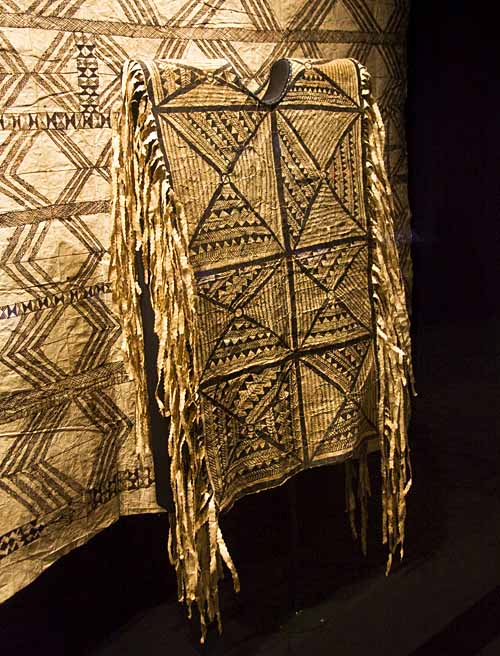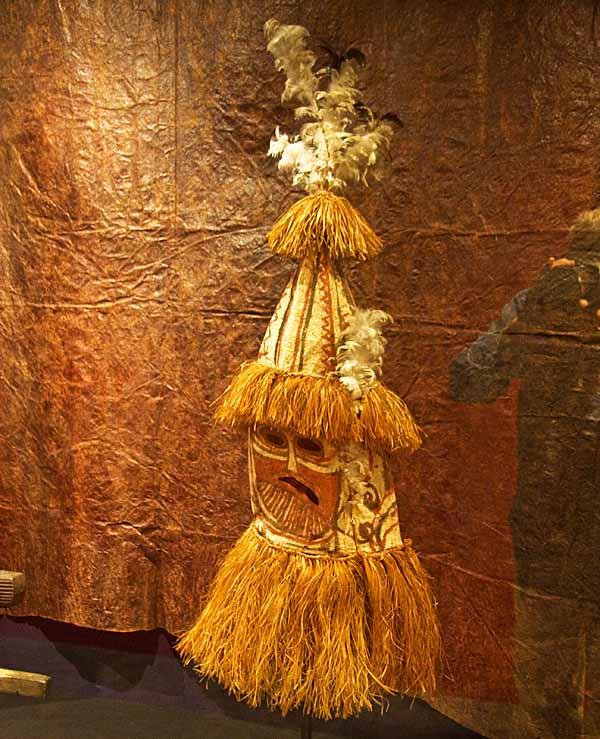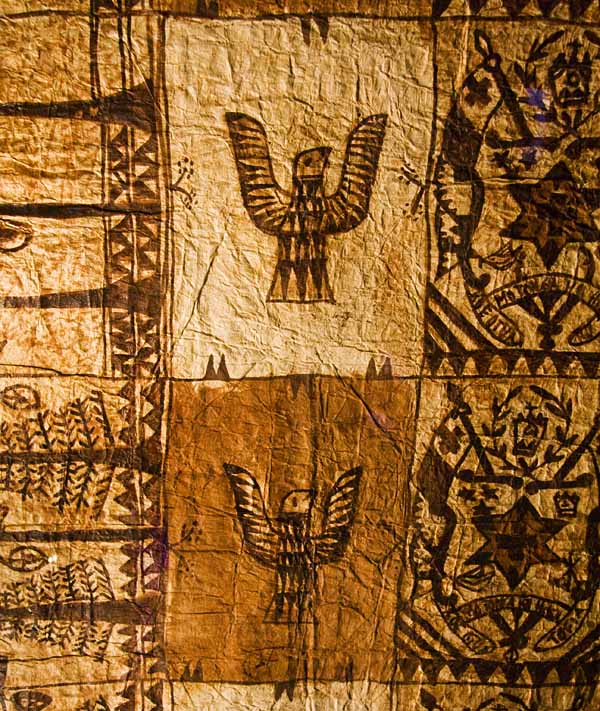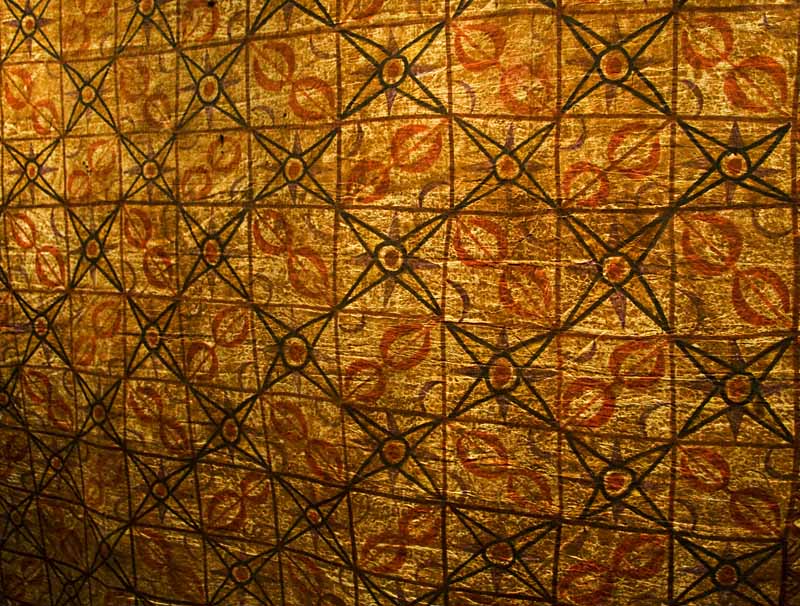A Trip to Australia and New Zealand
Wellington - Te Papa Museum

Tapa cloth is made from the bark of various trees. It can be found throughout Polynesia and is one of the threads that scholars think tie the Maori people to the greater Polynesian community. Here again, it was Captain Cook who first identified it for the western world and brought samples of it back to Europe. Traditional designs are painted on the fabric using natural pigments and dyes. The colors are usually black and/or shades of rust or brown. Tapa was used for a variety of purposes including clothing, blankets, ritual materials, decoration and packaging. Several museums that we visited on this trip had beautiful collections of tapa, but the Te Papa collection stands out as one of our favorites.


Making tapa cloth is an arduous and time consuming task for the women of the community. First, the bark is stripped off of the tree and dried in the sun. When throughly dry, it is beaten with wooden mallets on a wooden anvil for a very long period of time. Thin strips of bark are then beaten together to form wider bands. Plant starch is sometimes used to improve the adherence of the strips to one another. Eventually the strips are joined into sheets of fabric that can be as long as necessary for the purpose intended. The finished cloth is then painted with designs appropriate for the purpose for which the cloth has been made. The activity was an important part of daily life in a traditional Maori community. Sometimes it resembled a New England quilting party where a group of women participated in a single project for an important purpose. Frequently, women working together would blend the beat of their mallets to compose music. Although tapa fabric is beautiful, it has very little tensile strength, and when wet, none at all.

